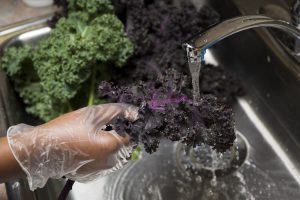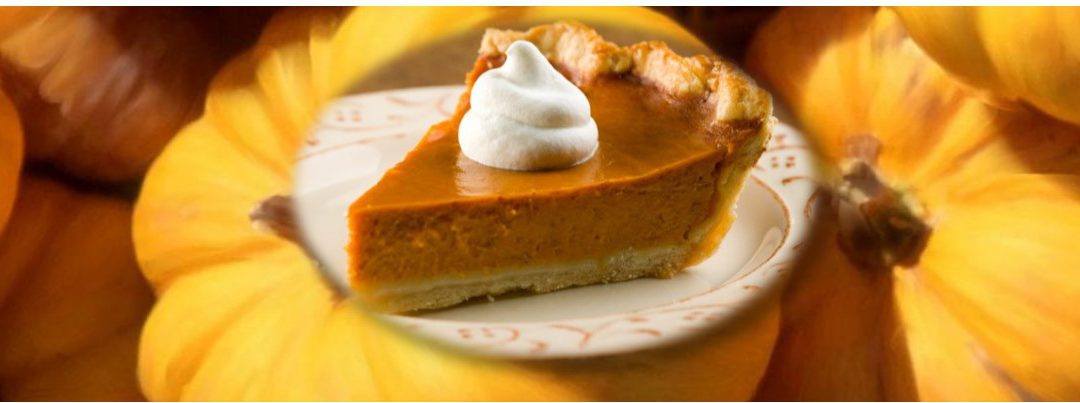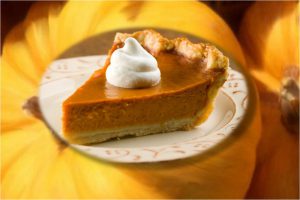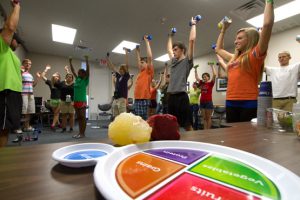
by Dorothy C. Lee | Mar 26, 2020

Strawberries from Fresh off the Farm event. Taken 04-12-2019 (Photo Source: UF/IFAS Camila Guillen)
Choose locally- grown strawberries during the harvesting season; they will be the freshest and the most flavorful. When picking strawberries, try to pick early in the morning or later in the day when the fruit is cool. Strawberries are best used within 2-3 days of picking.
Uses & Preparation
Freezing Whole Strawberries; Spread a single layer of prepared fruit on shallow trays and freeze. When frozen, promptly package (to avoid freezer burn) and return to freezer. The fruit pieces remain loose and can be used as needed.
Freezing Sliced or Crushed Strawberries; Prepare berries: Using ripe berries, wash gently and remove caps. Slice or crush partially or completely. To 1 quart berries add 3/4 cup sugar. Mix thoroughly. Stir until most of the sugar is dissolved or let stand 15 minutes. Pack into containers, leaving 1/2″ headspace. Seal and freeze.
Storage
Sort and remove any bruised or damaged berries as soon as possible and use in sauces, purees or jams. Place the berries in cool, well-ventilated containers. The moisture content of fresh strawberries is high, so store them unwashed and uncovered, or loosely covered.
Quantities
1 pint = about 3 1/4 cups whole berries (12-36 depending on size of berries) or about 2 1/4 cups sliced berries. 1 cup sliced fresh berries = One 10-oz. pkg frozen, sweetened berries.
MERRY FRESH STRAWBERRY PIE
1 9- inch pie crust, baked
1 cup white sugar
3 tablespoons strawberry flavored gelatin mix
2 tablespoons cornstarch
¼ teaspoon salt
1cup boiling water
2 pints strawberries, cleaned and stemmed
2 cups whipped topping (optional)
Combine sugar, gelatin, cornstarch, and salt in a medium saucepan. Stir in boiling water. Boil mixture for 3 minutes over high heat, stirring constantly. Cool completely.
Arrange whole strawberries in pastry shell. Pour gelatin mixture over berries. Chill before serving. Top with whipped topping, if desired.
Nutrition Information: Low in calories – High in Vitamin C – Good source of folate, potassium & fiber
Available Fresh: April – May
To learn about fresh Florida strawberries, please read our fact sheet: Panhandle Produce Pointers – Strawberries.
.For more delicious produce preparation tips, please visit: http://www.panhandleproducepointers.com.

by Dorothy C. Lee | Mar 3, 2020
Spring showers not only bring flowers, but beautiful fresh produce from the garden.
March in National Nutrition Month. Celebrate with nutritious delicious GREENS.

Be sure to carefully wash greens before preparing to ensure a safe and delicious product. (Photo source: Tyler Jones, UF/IFAS)
The dark leafy vegetable we refer to as “greens” range from earthy to peppery in flavor. Collard greens, mustard greens, turnip greens, and kale are often grouped together because of their texture, pronounced flavor, and general uses. They actually come from several vegetable families. In general, these tart greens are cooked before eating. The season for some varieties peak November through March.
Choose leafy greens with fresh full leaves. Avoid greens that are brown, yellow spotted, wilted, or have slimy leaves. Wash greens before use. Cut stems from leafy greens before cooking. Sauté collard greens with garlic, onions, and tomatoes a little bit of olive oil. Simmer greens in low-sodium chicken broth until greens are wilted and tender. Store greens in a plastic bag in the refrigerator for two to five days.
NUTRITION TIPS: A 1/4 cup of cooked greens is about the size of one cupped handful.
Beans and Greens
1 can white kidney beans or cannellini beans rinsed and drained
1 tablespoon olive oil
1/2 cup diced onion
2 cloves garlic, minced
2 pounds fresh kale, stemmed and chopped into large pieces
Salt and pepper to taste
Sauté onion and garlic in olive oil. Add greens to the skillet. Sprinkle with 2 tablespoon of water. Cook, tossing often, until greens are bright green and slightly wilted. Remove from heat. Drain and heat beans and add to green mixture. Toss mixture, season and serve. Serves four; 1 cup serving
Savory Greens
3 cups water
1/4 pound skinless turkey breast
1/2 cup chopped onions
2 cloves garlic, crushed
1/4 teaspoon cayenne pepper
1/4 teaspoon ground cloves
1/2 teaspoon dried thyme
1 green ground ginger
2 pounds mixed greens (collards, turnips, mustard, and kale)
Place all ingredients except greens into large pot and bring to a boil. Wash greens and remove stems. Chop greens into small pieces and add to stock. Cook 20 to 30 minutes until tender. Serves six; 1 cup serving
NUTRITION INFORMATION: Cooked greens are excellent sources of Vitamins A, C, K, and Calcium.
AVAILABLE FRESH: March – June & October – December
To learn about fresh Florida greens, please read our fact sheet: Panhandle Produce Pointers – Greens.
For more delicious produce preparation tips, please visit: http://www.panhandleproducepointers.com.

by Dorothy C. Lee | Feb 3, 2020
February is National Heart Health Awareness Month. On February 7th join the nation and wear red to show support and awareness for women and heart disease.
National Heart Awareness Month is sponsored by the American Heart Association. It is designed to provide the public with information that could lead to a more healthful lifestyle and reduce heart disease.

Go Red for Women’s Heart Health
Photo Source: Dorothy Lee
The Centers for Disease Control and Prevention estimates that 610,000 people die of heart disease in the United States yearly. According to the American Heart Association heart disease and stroke kills one in three women yearly in the United States. Heart disease is a silent killer. It often strikes without warning.
Know the risk factors and symptoms of heart disease. Risk factors are family history of heart disease, diabetes, poor diet, high blood pressure and cholesterol levels, excessive alcohol use, smoking and physical inactivity.
The diet choices we make today are important to our nutritional well-being tomorrow. A diet low in saturated fat and cholesterol, high in fruits and vegetables, and grain products that contain some type of dietary fiber may reduce the risk of heart disease.
Our health is our most precious possession. A healthy diet is only one part of a heart healthy lifestyle. Physical activity is another important component. The American Heart Association physical activity guidelines recommend some type of aerobic exercise daily. Walking, dancing, biking, swimming, or gardening are good examples. Be sure to consult your physician before starting any exercise program.
We are all concerned about maintaining good health. Take steps to a healthier heart. Develop good eating habits based on moderation and variety, plus physical activity can help keep and even improve your health. So, reach in the back of the closet and find that little red dress and wear it this year on Friday, February 7th in support of Women’s Heart Healthy Awareness. Go Red!
Resource: www.heart.org
For further information, contact:
Dorothy C. Lee, C.F.C.S.
UF/IFAS Extension Escambia County
3740 Stefani Road
Cantonment, FL 32533-7792
(850) 475-5230
dclee@ufl.edu

by Dorothy C. Lee | Oct 23, 2019
Pumpkins have been grown in the Americas for thousands of years. They are indigenous to the western hemisphere and were unknown in Europe before the time of Columbus. There was probably some kind of pumpkin served at the first Thanksgiving Feast.
Pumpkins, gourds, and other varieties of squash are members of the family Cucurbitaceae.

Pumpkin King of Pies
Photo Source: Esther Mudge
Baking with pumpkins during the holiday season has become a popular tradition. Pumpkin pie is king of the holiday pies.
Freshly baked pumpkin dishes are a delicious delight. It may surprise you that pumpkin is classified as a fruit, not a vegetable. Pumpkin is an excellent source of many nutrients. Pumpkin is rich in minerals like phosphorus, calcium, and iron. The pumpkin is also rich in carbohydrates. It contains vitamin A as well.
Small to medium size pumpkins are best for baking and cooking because they have a finer textured flesh than large pumpkins. Look for heavy pumpkins, and ones that do not have a hollow sound when you thump on them.
To use fresh pumpkin rather than canned pumpkin, scoop out the seeds and cut into small even pieces. The pumpkin can be peeled before or after cooking. Boil the pumpkin until tender and then mash it and use to prepare a variety of pumpkin dishes.
I like to cut the pumpkin in half, place the cut side down on a glass plate, and microwave on high for 20-25 minutes, depending on the pumpkin’s size, until tender. Then I remove the skin and beat the pumpkin in a mixer until smooth (strings will remain on the mixer blades). It’s now ready to use in any recipe.
One cup of raw pumpkin yields about ¾ to one cup of cooked, pureed pumpkin. It takes about 1 ½ to 2 cups of cooked pumpkin for a well-filled 9-inch pie.
When you carve that jack-o-lantern, don’t throw away the seeds. Roasted pumpkin seeds make a delicious, nutritious snack anytime and can be easily prepared in the microwave. See recipe below.
Pumpkin pie usually comes to mind first when the fall pie season arrives. However, pumpkin lends itself to a variety of bread, cookies, pancakes, muffins, butters, and a variety of other sweet treats. Happy Fall!!
ROASTED PUMPKIN SEEDS (in the microwave)
- 1 cup pumpkin seeds
- 1 tablespoon butter
- ¼ teaspoon seasoned salt
- Remove any fiber clinging to pumpkin seeds.
- Wash and drain well.
- Spread seeds in a single layer to dry, stirring occasionally.
- Line a 9-inch pie plate with two layers of paper towels. Sprinkle seeds on the towels.
- Microwave on HIGH 13 -14 minutes or until seeds are dry but still white, stirring every 5 minutes. Let stand 5 minutes.
- Place butter in a 2-cup measure and microwave until melted. Add seeds and salt; stir and coat.
- Serve as a snack.
FRESH PUMPKIN PIE
INGREDIENTS
FILLING:
- ¾ cup packed brown sugar
- 1 ¾ teaspoons pumpkin pie spice
- ¼ teaspoon salt
- 1 (12-ounce) can evaporated low-fat milk
- 2 eggs
- 1 ½ cup of fresh pumpkin (cooked and drained)
CRUST:
- Frozen 9-inch-deep pie crust
TOPPING:
- ¼ cup whipping cream
- 2 teaspoons powdered sugar
PREPARATION:
Place the oven rack to its lowest position. Preheat oven to 425ºF. Prepare fresh pumpkin as directed above. Be sure to drain the pumpkin after cooking. Now you are ready to use the pumpkin in recipes. To prepare filling, combine first 6 ingredients in a large bowl, stirring with a whisk. Add pumpkin and stir with a whisk until smooth. Pour pumpkin mixture into the crust. Place pie plate on a baking sheet. Place baking sheet on lowest oven rack. Bake at 425ºF for 10 minutes. Reduce oven temperature to 350ºF (do not remove pie from oven); bake an additional 50 minutes or until almost set. Cool completely on wire rack. To prepare topping, beat cream with a mixer at high speed until stiff peaks form. Add the powdered sugar and beat until blended. Serve with pie. Yield 1 Pie, about 6 -8 pieces.

by Dorothy C. Lee | Jul 21, 2019
Eating healthy is not something that just happens by going on a particular diet. In fact, the best kind of diet is where the right choices are made, and it becomes a way of life. Sometimes we need to know some ways to change the bad habits we have developed. There is no ‘quick fix’.

Tune Up Your Lifestyle
Photo Source: UF/IFAS
With today’s fast-paced lifestyles sometimes we feel we don’t have the time to do the things we know we should. For instance, to get more exercise, do things like park a distance from the store when you go shopping, walk up and down the stairs instead of taking the elevator, walk to lunch, or even turn up the speed on regular activities you perform around the house.
When grocery shopping choose foods from the basic food groups (fruits, vegetables, whole grains, lean protein, and reduced-fat dairy products) to round out a healthy meal plan.
Convenience foods are a part of today’s lifestyle, but they often lack nutritional quality, texture, and flavor. Preparing foods at home can be healthy and economical. You can boost nutrition and flavor by adding fresh herbs, spices, and aromatic vegetables to the meal menu.
Foods and beverages high in sugar add empty calories to the diet and contribute no nutritional value. Read labels to determine the amount of added sugar in food products. Choose lower calorie beverages.
Experiment with new food items. Try adding different fruits, vegetables, or grains to your diet. For example, try tropical fruits such as mango, guava, papaya, or grains as quinoa, barley, or millet, to add vitamins, minerals and fiber to the diet.
Before you go out to eat, don’t starve yourself. Drink water before the meal to avoid overeating or eat a snack before dinner and you won’t be tempted to overeat.
When socializing don’t meet at eating places. When you do dine out, cut out fried main dishes or ones with heavy sauces and gravies. Eat smaller portions and don’t go back for seconds. Order low-fat foods when possible. However, keep in mind that you too need to allow for indulgence along the way.
Be active! Physical activity has health benefits. Being physically active not only burns calories, it aids in physical strength, and cardiovascular health. U.S. Dietary Guidelines recommend being physically active at least 150 minutes a week for adults. (https://health.gov/dietaryguidelines/).
Chances are, along with a healthy diet and regular physical activity, your tune up will result in living a healthy lifestyle.
https://www.freshfromflorida.com/Consumer-Resources/Buy-Fresh-From-Florida/Tropical-Fruit
https://www.tropicalfruitgrowers.com/
For further information, contact:
Dorothy C. Lee, C.F.C.S.
UF/IFAS Extension Escambia County
3740 Stefani Road
Cantonment, FL 32533-7792
(850) 475-5230
dclee@ufl.edu










